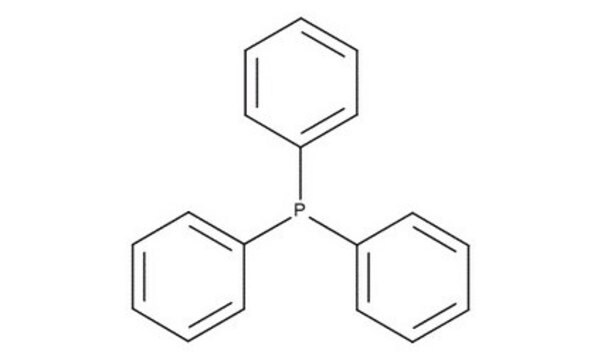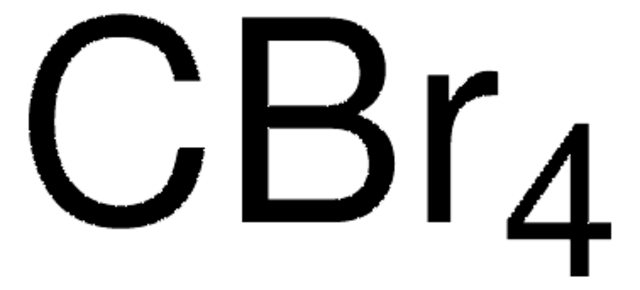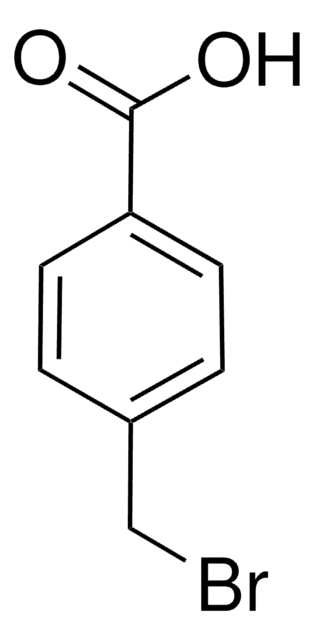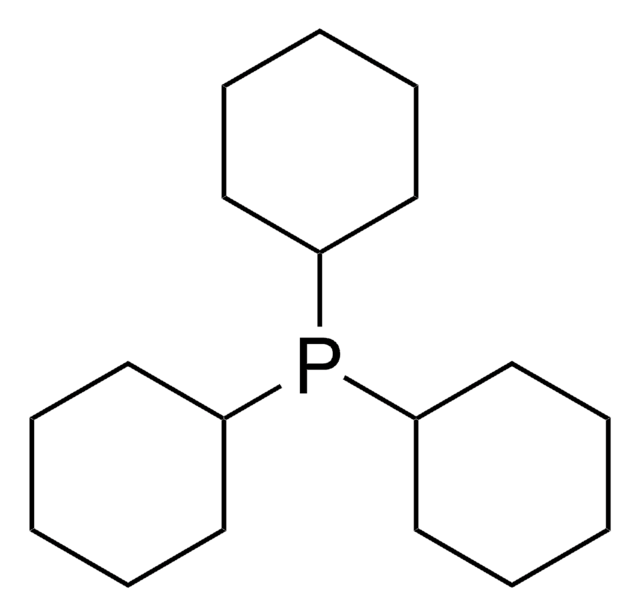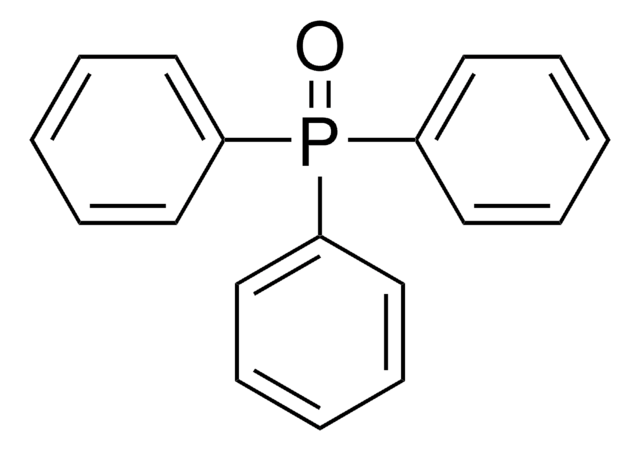Kluczowe dokumenty
T84409
Triphenylphosphine
ReagentPlus®, 99%
Synonim(y):
Phosphorustriphenyl
About This Item
Polecane produkty
gęstość pary
9 (vs air)
Poziom jakości
ciśnienie pary
5 mmHg ( 20 °C)
linia produktu
ReagentPlus®
Próba
99%
Właściwości
achiral
przydatność reakcji
reaction type: Buchwald-Hartwig Cross Coupling Reaction
reaction type: Heck Reaction
reaction type: Hiyama Coupling
reaction type: Negishi Coupling
reaction type: Sonogashira Coupling
reaction type: Stille Coupling
reaction type: Suzuki-Miyaura Coupling
reagent type: ligand
reaction type: Cross Couplings
Parametry
air stable
bp
377 °C (lit.)
mp
79-81 °C (lit.)
grupa funkcyjna
phosphine
ciąg SMILES
c1ccc(cc1)P(c2ccccc2)c3ccccc3
InChI
1S/C18H15P/c1-4-10-16(11-5-1)19(17-12-6-2-7-13-17)18-14-8-3-9-15-18/h1-15H
Klucz InChI
RIOQSEWOXXDEQQ-UHFFFAOYSA-N
Szukasz podobnych produktów? Odwiedź Przewodnik dotyczący porównywania produktów
Powiązane kategorie
Opis ogólny
Zastosowanie
Informacje prawne
Hasło ostrzegawcze
Danger
Zwroty wskazujące rodzaj zagrożenia
Zwroty wskazujące środki ostrożności
Klasyfikacja zagrożeń
Acute Tox. 4 Oral - Eye Dam. 1 - Skin Sens. 1B - STOT RE 1 Inhalation
Organy docelowe
Central nervous system,Peripheral nervous system
Kod klasy składowania
6.1C - Combustible acute toxic Cat.3 / toxic compounds or compounds which causing chronic effects
Klasa zagrożenia wodnego (WGK)
WGK 2
Temperatura zapłonu (°F)
356.0 °F - closed cup
Temperatura zapłonu (°C)
180 °C - closed cup
Środki ochrony indywidualnej
dust mask type N95 (US), Eyeshields, Faceshields, Gloves
Wybierz jedną z najnowszych wersji:
Masz już ten produkt?
Dokumenty związane z niedawno zakupionymi produktami zostały zamieszczone w Bibliotece dokumentów.
Klienci oglądali również te produkty
Produkty
The Heck reaction is the palladium catalyzed cross-coupling reaction between alkenes and aryl or vinyl halides (or triflates) to afford substituted alkenes.
Nasz zespół naukowców ma doświadczenie we wszystkich obszarach badań, w tym w naukach przyrodniczych, materiałoznawstwie, syntezie chemicznej, chromatografii, analityce i wielu innych dziedzinach.
Skontaktuj się z zespołem ds. pomocy technicznej
